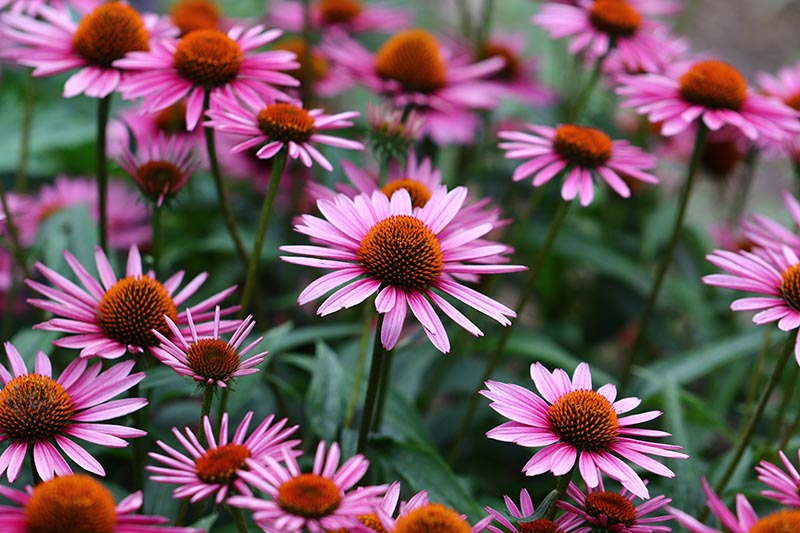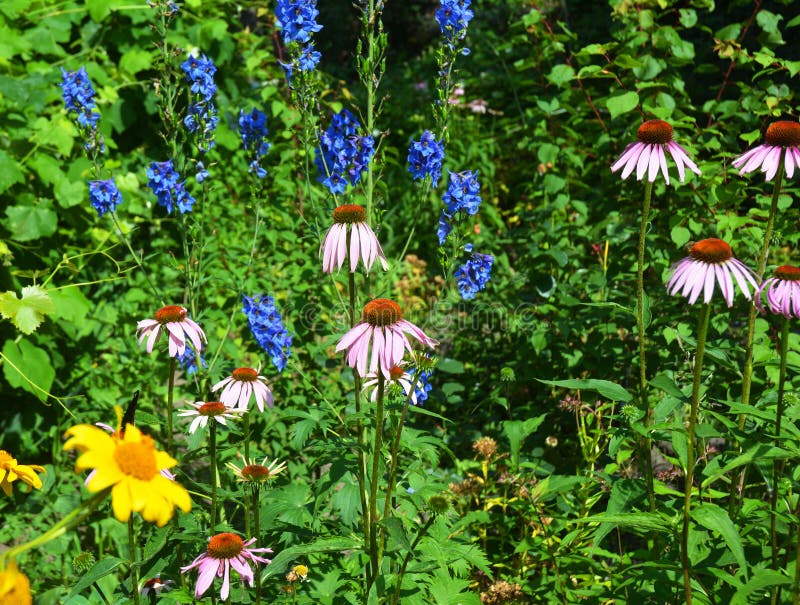Coneflowers are bright, erect perennials in the Daisy family native to North America (Asteraceae). The plant is endemic to the eastern United States, including Iowa and Ohio, as well as Louisiana and Georgia. They reach a height of 2 to 4 feet and have dark green foliage. They are quick growers who self-sow a lot of seeds. These midsummer bloomers will bloom from midsummer till frost in the fall! Coneflowers look great in a classic garden or a wildflower meadow, and they’re extremely eye-catching when planted in masses, especially in a variety of hues.
Following are some noteworthy tips to grow beautiful coneflowers in your garden with proper care:
Choose A Well Suited Coneflower
There are many natural coneflower species, but the purple coneflower, which grows between 2 and 4 feet tall, is the most popular. ‘White Swan,’ a popular option that grows up to 4 feet tall and has huge white blossoms, is among the many easy-to-find types. ‘Kim’s Knee High,’ for example, is a dwarf coneflower variety that stays extremely compact (with pinkish-purple flowers). If you have a little garden, plant these since you’ll get a lot of blossoms in a short amount of space.
Coneflower variants that don’t appear like coneflowers at all, such as hybrid double types with two rows of petals, are also available. Just keep in mind that the flowers on some of these plants don’t survive as long in the garden as those on others.


Prepare The Site
- Coneflowers bloom best in full sun and well-drained soil. Choose a position where the coneflowers will not be shaded out, and where others will not be shaded out.
- Depending on the kind, they can grow to be between 2 and 4 feet tall. Coneflowers can tolerate a wide range of soil conditions, but they thrive in rich soil, so add organic matter if necessary. Drought tolerance is a feature of coneflowers.
- Use a garden fork or tiller to loosen the soil in your garden to a depth of 12 to 15 inches, then add a 2- to 4-inch layer of compost.
How To Plant
Make a plan for where you want your coneflowers to go, making sure to allow enough space between them. (The amount of space required should be indicated on the plant tag.)
- Dig a hole slightly wider than and just as deep as the root ball for each plant.
- Insert a Quick Start Planting Tablet into the planting hole (as directed on the label) to kickstart root growth for the first 30 days.
- Carefully remove a coneflower plant from its container and insert it into the hole. The top of the root ball should be level with the surrounding soil.
- Fill in the plant with soil, patting it down around the base. Make sure you have plenty of water.
- Lay down a 3-inch layer of mulch around the plant to help keep the soil moist and block sunlight so weeds can’t develop, but don’t allow them to contact the plant.
Care Tips For A Better Growth
These low-maintenance perennials only need an inch of water each week, a small covering of compost in the spring, and must be cut back in the fall, though even that is optional if you like to leave the seed heads.
Pruning: While deadheading is a standard garden practice to stimulate recurrent blooming, many cultivars these days are flower machines that will continue to produce even if spent blooms are snipped off. In that manner, you may leave them alone, ensuring food for another popular species of wildlife: birds, particularly small songbirds like goldfinches, who are particularly fond of the seeds. Blossoms that bloom after deadheading are usually smaller and less pleasant, so why not let the early, larger flowers go to seed and feed the birds?
Coneflowers can be pruned down to ground level once they’ve done blooming to overwinter. Alternatively, if you choose to leave the dried seed alone.
Coneflowers can be pruned down to ground level once they’ve done blooming to overwinter. It can also be pruned down in early spring if you choose to leave the dry seed heads.
Soil: A medium-density, well-drained soil.
Compost and fertilizer: If the flowers are little or underdeveloped, work a bit of compost around the plants. Overfeeding might result in an abundance of foliage and a lack of blossoms, so be cautious.
Watering: Drought tolerant, but prefers average, dry to medium moisture. Water on a regular basis, but allow the soil to dry up in between. Coneflowers require at least an inch of water per week to thrive.
When clumps become overcrowded, divide them every 4 years or so. If you leave spent flowers alone, they will self-seed with no effort on your side. If they’re getting out of hand, deadheading can help you keep them under control. Some gardeners opt for a medium ground and collect seeds from there.


Diseases and pests: Aster yellows, a virus-like disease caused by a phytoplasma, is a concern worth addressing in Echinacea. Deformed flowers, often with strange tufts in the cones, and yellow leaves with green veins are symptoms. Sap-sucking insects such as leafhoppers disseminate the parasite (and can also be spread on pruners during deadheading). There is no cure, so if you detect a plant is diseased, dig it up and dispose of it as soon as possible. Leaf miners, powdery mildew, bacterial spots, grey mould, vine weevils, and Japanese beetles can also cause problems.
Also Checkout: Botanical gardens-: Basic botany to decorate your garden.



